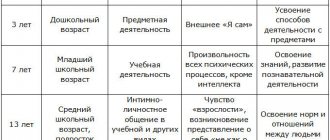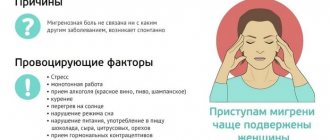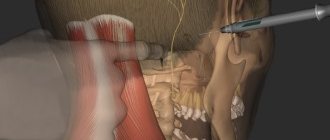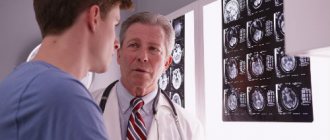Many patients report that they have goosebumps on their heads, but they don’t understand what they are. Therefore, they are often asked to explain the reason for the appearance of such a symptom and talk about how treatment can be carried out effectively and safely. In this article you can find out what goosebumps mean and what diseases manifest themselves in this way. Advice is also given on choosing a specialist and conducting treatment.
Let's start with the fact that goose bumps on the scalp are a sign of neurological or vascular problems. To make this clear, let’s talk about how the innervation and blood supply system works.
So, in the cervical spine there is a segment of the spinal cord of the same name. The radicular nerves extend from it. They branch and form plexuses, nerves. Some of them are responsible for the innervation of the scalp. Also, paired cranial nerves depart from the brain through the foramen ovale of the occipital bone. They also branch and are partially responsible for the innervation of the tissues of the head. In particular, the facial and trigeminal nerves are formed exclusively by the branches of the cranial pairs. Also, their branches are part of the nerve plexuses that innervate the hair follicles and small blood vessels. They provide tone to the posterior vertebral arteries.
Blood supply to the tissues of the head and brain is carried out by four arteries. Two posterior vertebrates and two carotid. They branch, giving rise to many arterioles, which pass into a network of capillaries. Each nerve ending in the thickness of the subcutaneous fat layer has its own capillary vessel.
When a capillary spasms, the blood supply process is disrupted and the nerve ending enters a state of ischemia. This may feel like numbness or crawling. Also, similar sensations occur in clusters (in a certain area of the scalp).
The lower the area of negative impact is located, the larger area of the head is subject to paresthesia, in which the patient feels that goosebumps are crawling on or under the skin. Therefore, an accurate description of the area of distribution of the clinical sign will allow the doctor to quickly make a diagnosis and develop an effective treatment regimen for the underlying disease.
Please note that the feeling of crawling sensations in some cases can be a physiological phenomenon. This may occur due to short-term compression of blood vessels or nerves by external factors. For example, if a person was in an uncomfortable static position for some time. Or if he was wearing a tight headdress. Similar sensations can occur after exposure to low temperatures. When hypothermia occurs, blood vessels in the epidermis and subcutaneous fat layer spasm. After the cessation of cold exposure, the vessels begin to restore their tone. Fresh capillary blood enters the tissues. And this may be accompanied by the effect of crawling goosebumps. If this is a physiological condition, then all unpleasant sensations disappear within 30 - 40 minutes.
If they continue for hours or do not stop at all, you need to see a doctor for help as soon as possible. It is necessary to visit a neurologist or vertebrologist. These doctors have the necessary medical qualifications to make an accurate diagnosis and prescribe appropriate treatment.
In Moscow, you can make a free appointment with a vertebrologist or neurologist at our manual therapy clinic. Experienced specialists work here. They will be able to make an accurate diagnosis and develop an effective course of treatment. You will receive comprehensive individual recommendations regarding eliminating potential negative impact factors. This will help stop the destructive pathological process and allow the necessary treatment to be carried out more quickly.
Reasons why you get goosebumps on your scalp
Now let’s return to the potential reasons why goosebumps run through the head - let’s consider the main diseases that give a similar clinical symptom. As mentioned above, the cause of goosebumps may be hidden behind vascular or neurological pathologies. They, in turn, can be vertebrogenic, endocrine, post-traumatic, metabolic, toxic, etc.
If you follow this classification, you can identify the main reasons why you get goosebumps. These are conditions and diseases such as:
- violation of the integrity of the bone tissues of the skull and cervical spine (fractures and cracks);
- stretching, fibering and ruptures of the long longitudinal ligaments of the spinal column (they begin in the area of the occipital bone and end in the area of the coccyx;
- instability of position and subluxations of the first cervical vertebra (atlas);
- degenerative dystrophic disease of intervertebral discs (cervical osteochondrosis);
- its complications, such as protrusion of intervertebral discs, their extrusion and prolapse of hernia;
- damage to the muscles of the neck and collar zone (sprains, hematomas, ruptures, necrosis, myositis, including ossificans, fibromyalgic pain syndrome, etc.);
- diseases of the endocrine system, accompanied by disorders of the blood supply and innervation (for example, diabetes mellitus and diabetic angiopathy and neuropathy developing against it);
- vasculitis, Raynaud's syndrome and other vascular lesions;
- insufficiency of certain vitamins and minerals that ensure trophism of nerve fibers and transmission of impulses along axons (B vitamins, magnesium, calcium, sodium, etc.);
- curvature of the spinal column and displacement of the vertebral bodies;
- spinal canal stenosis in the cervical and cervicothoracic spine of various origins;
- posterior vertebral artery syndrome;
- pinched cranial nerves;
- plexitis of the cervical and occipital nerve plexus;
- tuberculosis, syphilis, polio, tick-borne encephalitis and other dangerous infections of the spinal cord, its hard membranes and tissues of the spinal column;
- tumor processes, including the process of metastasis during the development of oncology.
Potential causes of goosebumps on the scalp need to be identified at the stage of a comprehensive diagnosis. At the time of starting treatment, all these reasons should be eliminated if possible. This circumstance will make it possible to carry out successful and safe treatment much more effectively. Therefore, during an initial consultation with a patient, an experienced doctor will not only tell him about why goosebumps occur in his individual case, but will also give a number of practical recommendations. They will eliminate possible risk factors.
Among them are the most common:
- improper organization of sleeping and working spaces in violation of modern ergonomic requirements;
- poor posture (the habit of slouching or pushing your shoulders forward);
- incorrect choice of clothing for everyday wear (with pressure on the muscles of the neck and collar area);
- prolonged stay in a static position and tension in the muscular frame of the shoulder girdle;
- traumatic sports and work activities;
- violation of the rules of movement on a vehicle (as a rule, this is driving in a car without a seat belt fastened, which provokes displacement of the cervical vertebrae during emergency braking);
- smoking and drinking any alcoholic beverages (creates the risk of a sharp narrowing of blood vessels and disruption of microcirculation processes of blood and lymphatic fluid, which entails various trophic tissue pathologies);
- excess body weight;
- improperly designed diet.
All these provocative risk factors lead to the development of diseases that are manifested by crawling goosebumps on the scalp. Most often the hairy part is affected. Sometimes this sensation is accompanied by pain and other clinical symptoms. If you have paresthesia, be sure to visit a neurologist and get advice on undergoing a full diagnosis and treatment.
Causes of tingling, goosebumps in the hands
Depending on the frequency and circumstances of occurrence, paresthesia is divided into short-term and chronic.
—>
At the MART clinic on Vasilyevsky Island
- Evidence-based medicine
- Experienced specialists
- Monitoring of patients for 6 months.
- Diagnostics (MRI, ultrasound, tests)
- Daily 8:00 – 22:00
Make an appointment
Short-term paresthesia most often occurs when there is a lack of blood circulation or compression of a sensitive nerve located close to the surface of the body, during sleep or an uncomfortable position, which disrupts the normal conduction of nerve impulses. This leads to temporary loss of sensation in the limb, numbness and tingling in the hand. Sensations of this kind are well known to those who have at least once “rested” their hand.
Short-term paresthesia is mostly unilateral and does not entail any consequences, so special treatment for goosebumps in the hand is not required in this case.
If such sensations occur frequently and regardless of the position of the limb, it is likely that there is chronic paresthesia caused by more serious causes.
The following diseases are accompanied by constant pathological complication of blood flow or disruption of the innervation of the tissues of the upper extremities:
- Osteochondrosis of the cervical spine and its complications (protrusion, intervertebral hernia, spondylosis)
- Carpal tunnel syndrome (carpal tunnel syndrome)
- Hand injuries (sprain, tendon rupture, broken bones)
- Nerve damage
- Multiple sclerosis
- Amyotrophic lateral sclerosis
- Diabetes
- Polyneuropathy
- Thyroid diseases
- Atherosclerosis
- Peripheral vascular disease
- A brain tumor
- Vascular aneurysms
- Buerger's disease
- Lyme disease
- Angiopathy
- Raynaud's syndrome
In addition to the listed diseases, the cause of tingling and goosebumps in the hands can also be low calcium levels, severe fatigue, stress, and mental stress.
If you have any questions, ask our specialist! Ask a Question
The sudden development of paresthesia may also be a harbinger of an impending myocardial infarction or cerebral stroke. These conditions threaten human life and require immediate access to qualified medical care.
What else to pay attention to - accompanying symptoms
If your head is numb and you have goosebumps, you should pay close attention to the accompanying symptoms. This will help you choose the right doctor. For example, if you constantly feel dry mouth, the frequency and volume of urination has increased, and there is irritation on the skin, then it is advisable to first visit an endocrinologist. This doctor will rule out the possibility of developing diabetes mellitus and accompanying neuropathy.
If there is pain in the neck, difficulty turning and tilting the head, then you need to make an appointment with a vertebrologist. Most likely you are developing osteochondrosis, protrusion, spondyloarthrosis, spondylitis and a number of other degenerative diseases. The vertebrologist will prescribe an X-ray examination of the cervical and cervicothoracic spine. In the image, he can see a decrease in the height of the intervertebral spaces, which will indicate the development of osteochondrosis to the protrusion stage. If the intervertebral joints are destroyed, it is highly likely that a diagnosis of deforming spondyloarthrosis will be made.
An MRI examination may be required to clarify the diagnosis. It shows the condition of all soft tissues: cartilaginous intervertebral discs, radicular and cranial nerves, muscles, ligaments and tendons. Doppler ultrasound will help identify pathologies of the vascular bed.
If on the eve of the appearance of goosebumps on your scalp there was a traumatic impact (a fall, emergency braking while driving in a car, a blow, an awkward turn of the head), then you should first visit a traumatologist. This specialist will eliminate the possibility of displacement of the vertebral bodies, violation of their integrity (fracture or crack), and tissue ruptures. If injuries are found, the doctor will suggest initial surgical treatment.
The doctor explained why goosebumps appear and run all over the body
Photo: depositphotos/HayDmitriy
Immunologist Anna Shulyaeva explained why goosebumps appear and run on the body, reports the Arguments and Facts website.
She noted that in most cases this phenomenon is completely harmless. Most often, goosebumps appear as a result of a reflex to danger. This effect is a human atavism, and animals protect themselves in this way.
“Most often, such a reaction is observed in response to some external stimuli, and goosebumps appear on their own, unexpectedly and not always on time,” Shulyaeva noted.
She added that the cause of goosebumps is most often an emotional outburst or hypothermia. In a normal reaction, the effect wears off without any consequences after a few seconds. At the same time, goosebumps may be evidence of some kind of pathology.
Shulyaeva noted that if they appear for no apparent reason, then this may be a reaction to neurological disruptions in the body. In this way, the body tries to tell about damage to the nerves or nerve endings.
“Also among the reasons may be vitamin deficiencies, the appearance of some neoplasms that compress the nerves. This situation can occur spontaneously and against the background of problems with blood vessels. In this case, it is recommended to visit a phlebologist for a detailed study of the situation, diagnosis and treatment,” Shulyaeva said.
She added that pain or numbness in the limbs that occurs after the appearance of goosebumps may also be a reason to see a doctor. In addition, the effect of running, as if goosebumps ran all over the skin, is considered a deviation from the norm. This may be a consequence of a lack of vitamins or insufficient oxygen supply to the tissues.
In addition, among the reasons it is worth noting a lack of collagen. In such cases, the skin begins to peel off and irritation begins to appear on it. In this case, you need to adjust your diet, making it more fortified, which a specialist can help with.
The chills and tremor of the limbs can also be masked by the chills effect. This may indicate problems with the thyroid gland, and therefore you need to consult an endocrinologist. The appearance of goosebumps on the left side may indicate problems with the heart and blood vessels, especially if they last more than 5 minutes and are accompanied by trembling.
If, in addition to the appearance of goosebumps, chronic fatigue, heaviness, swelling or numbness in the legs appear, then it is necessary to undergo a full medical examination. It is especially worth paying attention to the performance of blood vessels and the presence of plaques in them.
Earlier, dermatologist Svetlana Zhaboeva gave recommendations on skin care in case of sunburn. She noted that the first step is to wash your face to eliminate sweat and dirt. Then you need to apply a soothing cream to the skin.
How is the treatment carried out?
It is impossible to treat separately the feeling of goosebumps running through the head, since this is not an independent disease, but only a symptom of it. Therefore, an accurate diagnosis is extremely important for proper treatment. Do not engage in self-diagnosis and treatment. Be sure to contact specialists.
We will consider standard conservative treatment of cervical osteochondrosis complicated by protrusion and intervertebral hernias. This is the most common reason for the sensation of crawling on the scalp.
Treatment in such a situation always begins with a procedure of manual traction of the spinal column. 3-4 sessions are enough to completely relieve pain and paresthesia. The space between adjacent vertebral bodies increases. The cartilaginous discs straighten completely. The compression pressure on the surrounding soft tissues, including the radicular and cranial nerves, stops. This helps normalize the patient's condition. But it is impossible to talk about a full recovery.
To achieve a long-term, sustainable result, a full course of therapy is required. It is developed by the doctor individually for each patient. It may include the following procedures:
- massage to normalize the tone of the paravertebral muscles and increase the level of elasticity of the soft tissues surrounding the spinal column;
- osteopathy to enhance the processes of microcirculation of blood and lymphatic fluid, increasing the intensity of trophism;
- reflexology to launch natural regeneration processes by activating the hidden reserves of the human body;
- therapeutic exercises, kinesiotherapy, physiotherapy and much more.
If you need consultation and treatment, then you can make an appointment right now for a completely free appointment with a vertebrologist at our manual therapy clinic.
Treatment of pins and needles and goosebumps in the hands at the MART clinic
Goosebumps in the hands, pins and needles, numbness and other similar sensations in the hands, as a rule, indicate the presence of serious disorders in the body. Some of them can even be dangerous, and therefore you should not try to solve the existing problem yourself or using traditional methods. Prescribing the necessary treatment for goosebumps, burning sensations, pins and needles and other discomforting sensations in the right or left hand is possible only after determining the exact cause of their occurrence.
To identify the cause of paresthesia in the hands, it is necessary to undergo a thorough examination, which is recommended to begin with a visit to a neurologist. Effective treatment can only be prescribed by a doctor based on examination and additional research methods: laboratory tests, ECG, MRI, ultrasound.
At the MART medical center, treatment courses for pins and needles in the fingers and goosebumps in the hands are selected individually. If osteochondrosis or other neurological pathologies are detected, manual therapy, therapeutic massage and regular exercise therapy are prescribed. Physiotherapeutic procedures and reflexology are also used to restore normal sensitivity in the hand.
Sign up at the MART medical center in St. Petersburg (see map) by phone, or leave a request on the website.










